Overview
The article examines the diverse applications of machine learning in property management, emphasizing how these technologies significantly enhance operational efficiency, improve tenant interactions, and streamline various processes. From automated document processing to predictive maintenance and AI leasing assistants, each application illustrates substantial benefits, including:
- Reduced administrative burdens
- Heightened tenant satisfaction
- Improved decision-making capabilities
Consequently, these advancements are transforming the property management landscape.
Introduction
The rapid evolution of technology has undeniably transformed various industries, and property management stands as a notable example. With machine learning leading the charge, real estate professionals are uncovering innovative applications that streamline operations, enhance tenant experiences, and improve decision-making processes. As the demand for efficiency and accuracy intensifies, a critical question emerges: how can property managers effectively leverage these machine learning applications to not only keep pace with industry changes but also secure a competitive edge? This article explores nine essential machine learning applications in property management that promise to revolutionize the way real estate is managed.
Parse AI: Streamline Title Research with Machine Learning Automation
Parse AI harnesses advanced machine learning algorithms to automate the extraction of essential information from title documents. This technology is crucial for , as it meticulously analyzes extensive datasets to discern patterns and identify inconsistencies. Consequently, title researchers can expedite their workflows with enhanced precision. By significantly reducing the potential for human error, property ownership is verified with a higher degree of reliability. Real estate professionals can then redirect their efforts towards strategic decision-making, freeing themselves from the burdens of tedious paperwork.
Furthermore, according to industry forecasts, the global AI market is projected to grow significantly by 2027, with AI expected to boost global GDP by 14% by 2030. As Ginni Rometty, CEO of IBM, states, 'Some people call this artificial intelligence, but the reality is this technology will enhance us.'
The integration of machine intelligence not only streamlines the title research process but also positions Parse AI as a pivotal player in the evolution of real estate document processing.
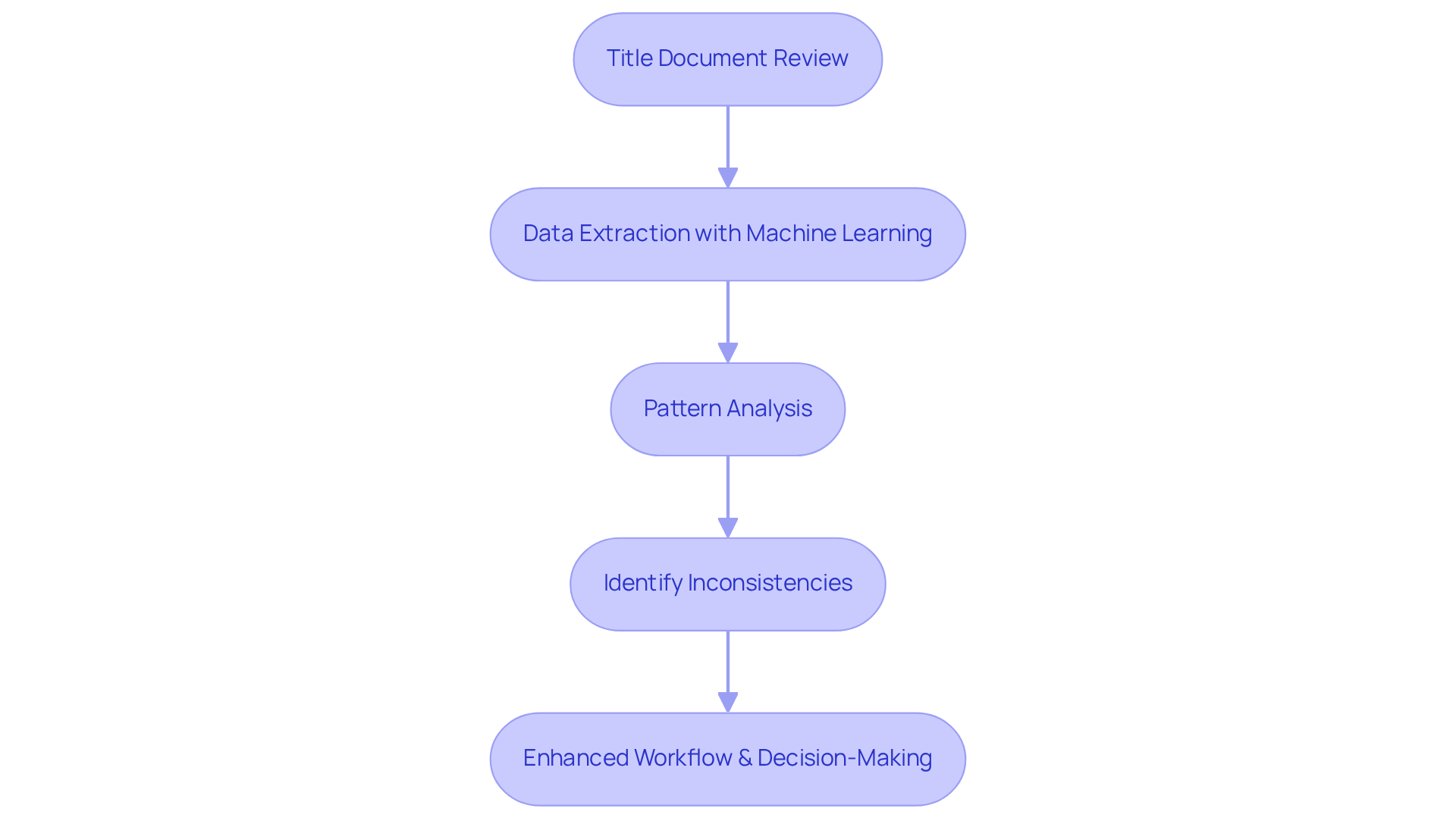
Automated Document Processing for Landmen: Enhance Efficiency with Machine Learning
Machine learning applications in property management revolutionize automated document processing, empowering landmen to swiftly analyze and categorize extensive paperwork. By employing optical character recognition (OCR) methods, Parse AI transforms scanned documents into editable formats, streamlining data extraction. This advancement accelerates workflows and significantly enhances accuracy, minimizing the risk of errors in crucial property transactions.
As stated, 'Buying real estate is not only the best way, the quickest way, the safest way, but the only way to become wealthy.' This underscores the importance of , where OCR systems enable landmen to focus on strategic decision-making rather than being overwhelmed by administrative tasks.
The advantages of OCR in machine learning applications in property management extend beyond mere speed; they encompass improved data integrity and the capability to handle complex documents effortlessly, ultimately leading to more informed and timely decisions in real estate transactions.
Furthermore, intelligent document processing (IDP) can reduce document verification time by as much as 85%, with 55% of companies reporting faster decision-making as a direct benefit of automated document workflows. The urgency for landmen to adopt these technologies is unmistakable. Additionally, as 78% of enterprise executives identify document automation as a top priority for 2025, the time to embrace these advancements is now.
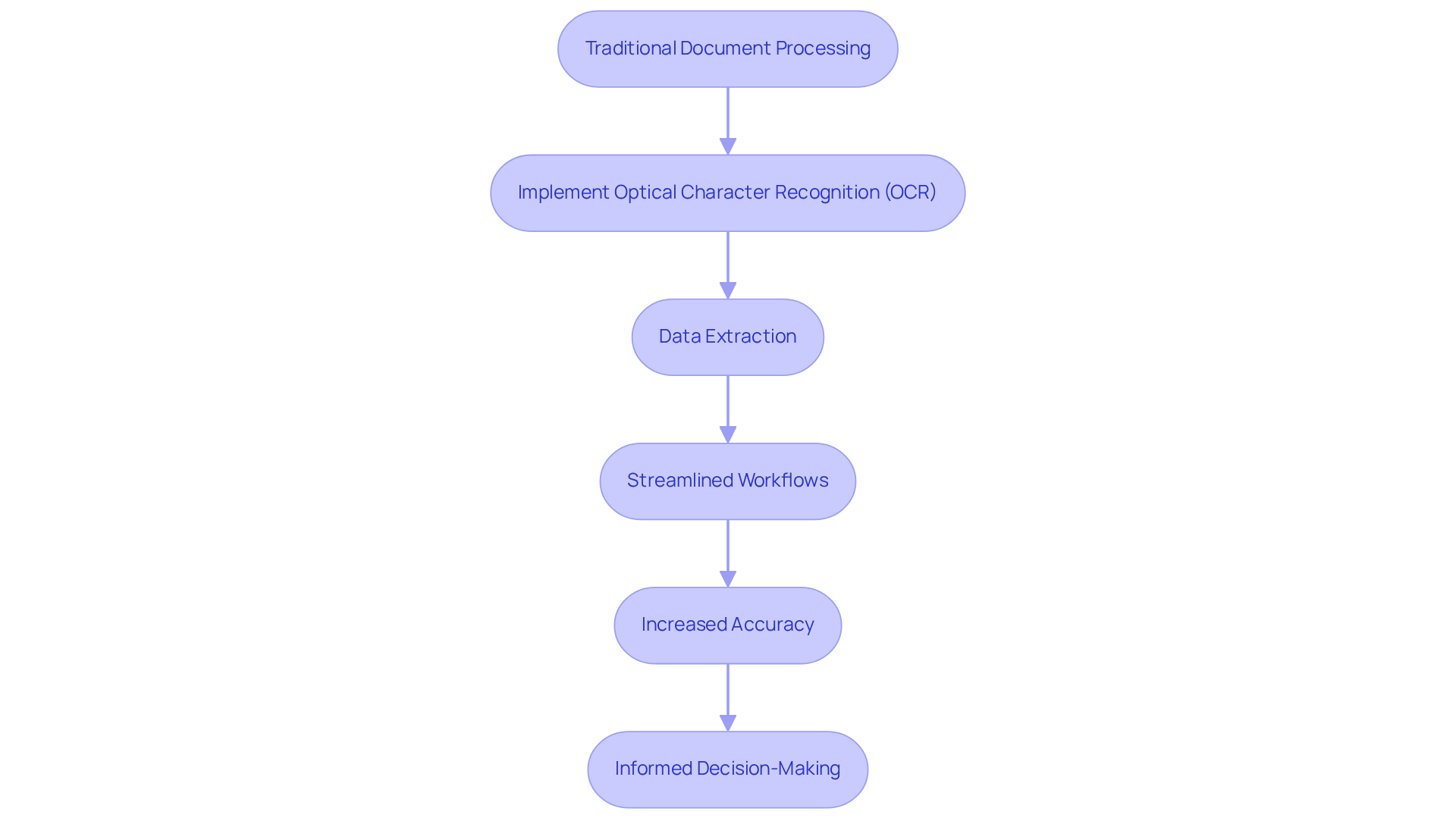
Predictive Maintenance: Use Machine Learning to Anticipate Property Issues
Machine learning algorithms play a pivotal role in analyzing historical maintenance data to forecast potential equipment or system failures. By discerning patterns and trends, managers of real estate can proactively schedule maintenance, significantly reducing downtime and repair expenses. This progressive strategy not only enhances tenant satisfaction but also extends the lifespan of real estate assets.
With predictive maintenance, organizations can expect to by up to 25% by addressing minor issues before they escalate into major repairs. Significant cost savings are typically observed within 6-12 months of full implementation, emphasizing the long-term benefits of adopting such technologies. Furthermore, research shows that predictive maintenance can improve operational uptime by 10-20%, ensuring that facilities remain functional and efficient. Almost 47% of facilities focus on enhancing uptime as their primary objective with predictive maintenance, underscoring its significance in asset management.
As the real estate sector progressively embraces these innovations, the incorporation of machine learning applications in property management into maintenance procedures is becoming vital for enhancing efficiency and realizing significant cost reductions. However, it is crucial to recognize that successful implementation requires access to reliable, accurate data, as 60% of maintenance professionals consider this critical. Additionally, organizations must be prepared for the initial investment in technology and address potential skill gaps within their teams.
Predictive maintenance isn’t just fancy tech talk—it’s your ticket to smoother operations and a healthier bottom line.
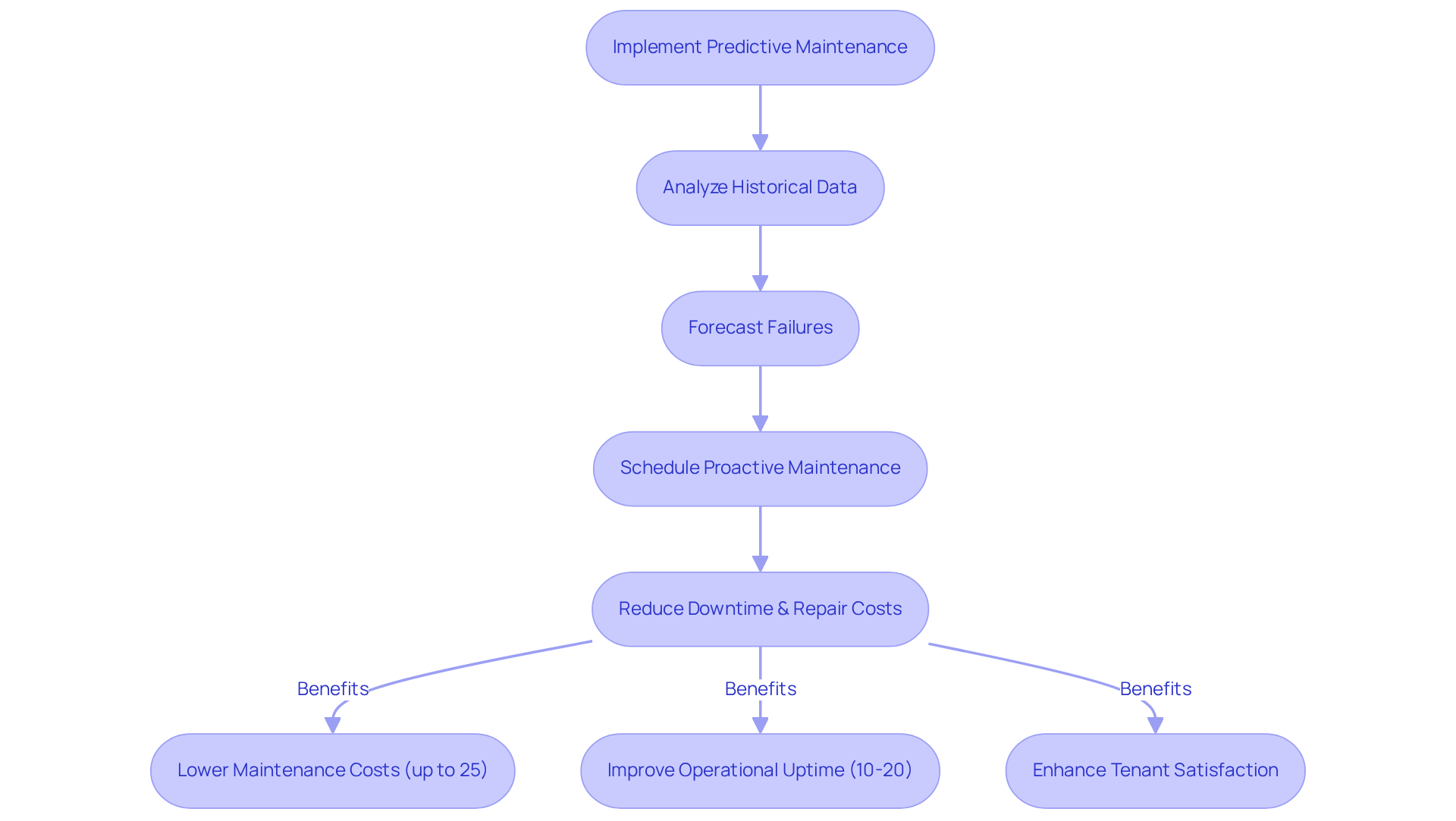
AI Leasing Assistants: Improve Tenant Interactions with Machine Learning
AI leasing assistants utilize machine learning applications in property management to revolutionize tenant interactions by adeptly managing inquiries, scheduling viewings, and delivering personalized suggestions tailored to user preferences. This automation ensures swift responses, thereby significantly enhancing resident satisfaction.
Studies reveal that properties employing AI for resident communication witness a remarkable surge in engagement, with automated interactions yielding a 33% increase in lead generation. Furthermore, machine learning applications in property management can predict lease renewals with 70% accuracy by analyzing occupant data, underscoring their effectiveness in bolstering communication and retention.
By optimizing these processes through machine learning applications in property management, property managers not only conserve valuable time but also foster a more engaging and responsive environment for tenants, ultimately leading to higher retention rates and improved overall satisfaction.
To fully harness these advantages, it is imperative for managers to to streamline their operations.
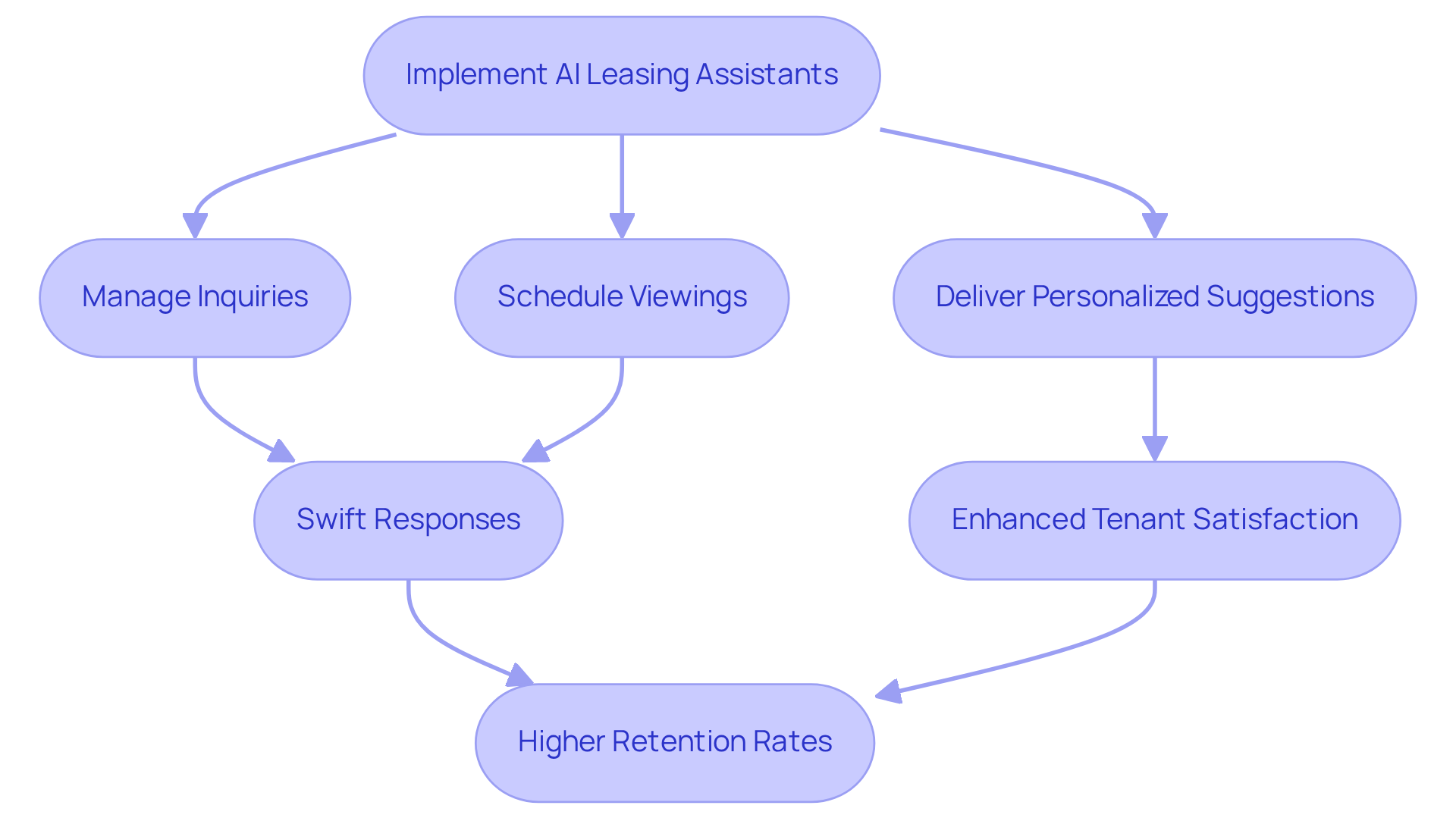
Virtual Tours and Property Viewing: Enhance Tenant Experience with Machine Learning
Machine learning significantly enhances virtual tours by delivering personalized viewing experiences tailored to individual preferences. Advanced algorithms meticulously examine user behavior, enabling managers to suggest listings that closely align with prospective renters' needs. This not only bolsters tenant involvement but also empowers managers to showcase their services more efficiently, thereby broadening their reach.
For instance, AI-driven platforms now allow purchasers to visualize design alterations prior to visiting locations, fostering a more immersive experience. Consequently, assets employing these innovations experience heightened interest and improved conversion rates, with AI-generated quotes contributing to a remarkable 45% rise in quote-to-lease conversion rates.
Furthermore, AI technology transforms the estate search landscape by providing unparalleled precision and effectiveness, highlighting the importance of machine learning applications in property management as an essential resource in contemporary asset management.
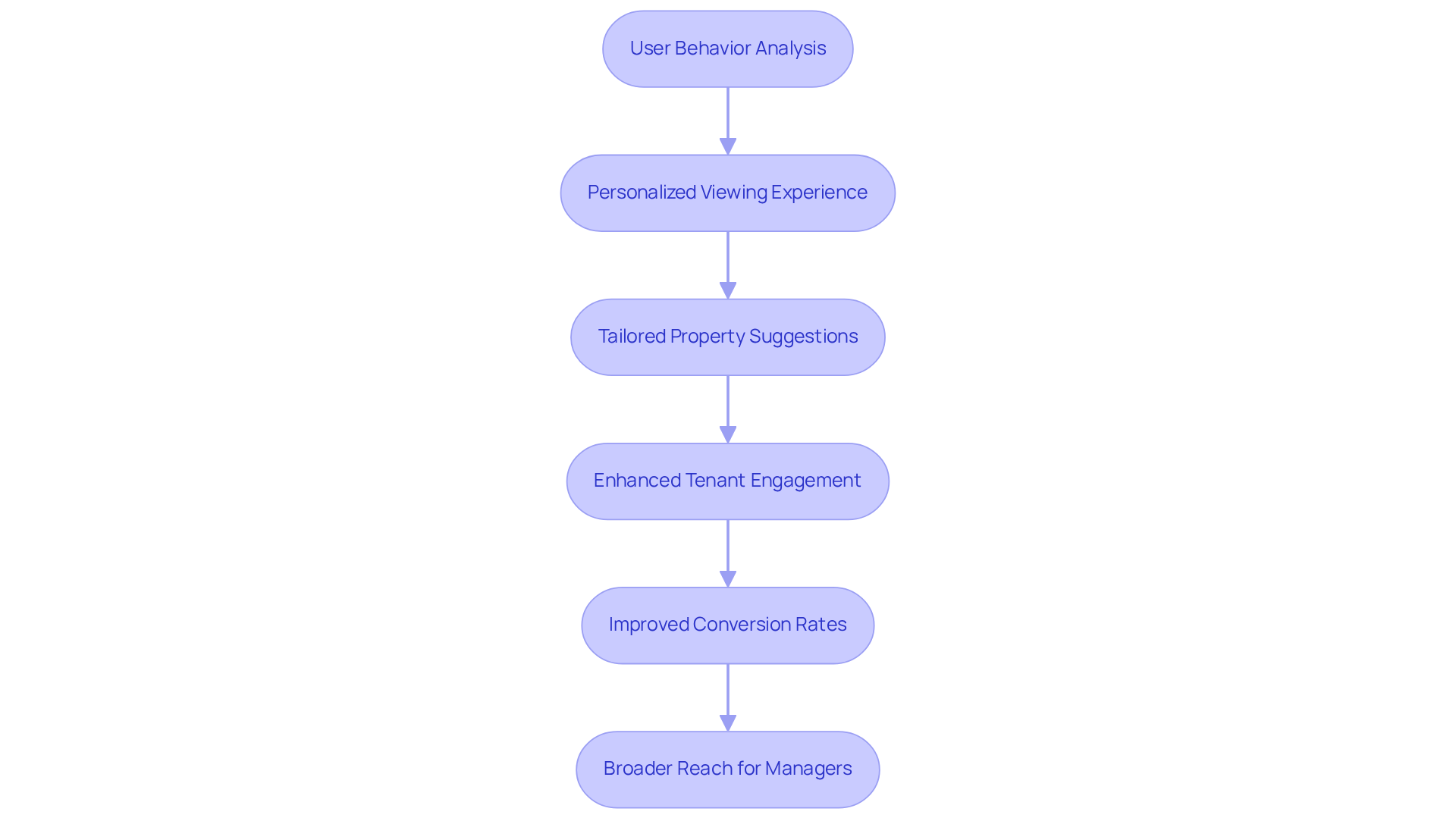
Energy Efficiency and Smart Building Technologies: Optimize Consumption with Machine Learning
Machine intelligence plays a pivotal role in analyzing energy consumption patterns in smart buildings, enabling the identification of inefficiencies and the recommendation of targeted optimizations. By utilizing intelligent sensors and IoT devices, real estate managers can access real-time information, facilitating dynamic modifications to energy systems. This proactive approach not only leads to substantial cost savings but also significantly of buildings.
Furthermore, according to a report, the global smart building market is projected to grow from $80.62 billion in 2022 to $328.62 billion by 2029, highlighting the increasing importance of energy management in the real estate sector. As energy management becomes more essential, the incorporation of machine intelligence technologies aligns with wider sustainability objectives, ensuring that management practices are both financially and ecologically responsible.
As noted by Stephen Gardiner, "Good buildings come from good people, and all problems are solved by good design," emphasizing the importance of innovative solutions in achieving energy efficiency.
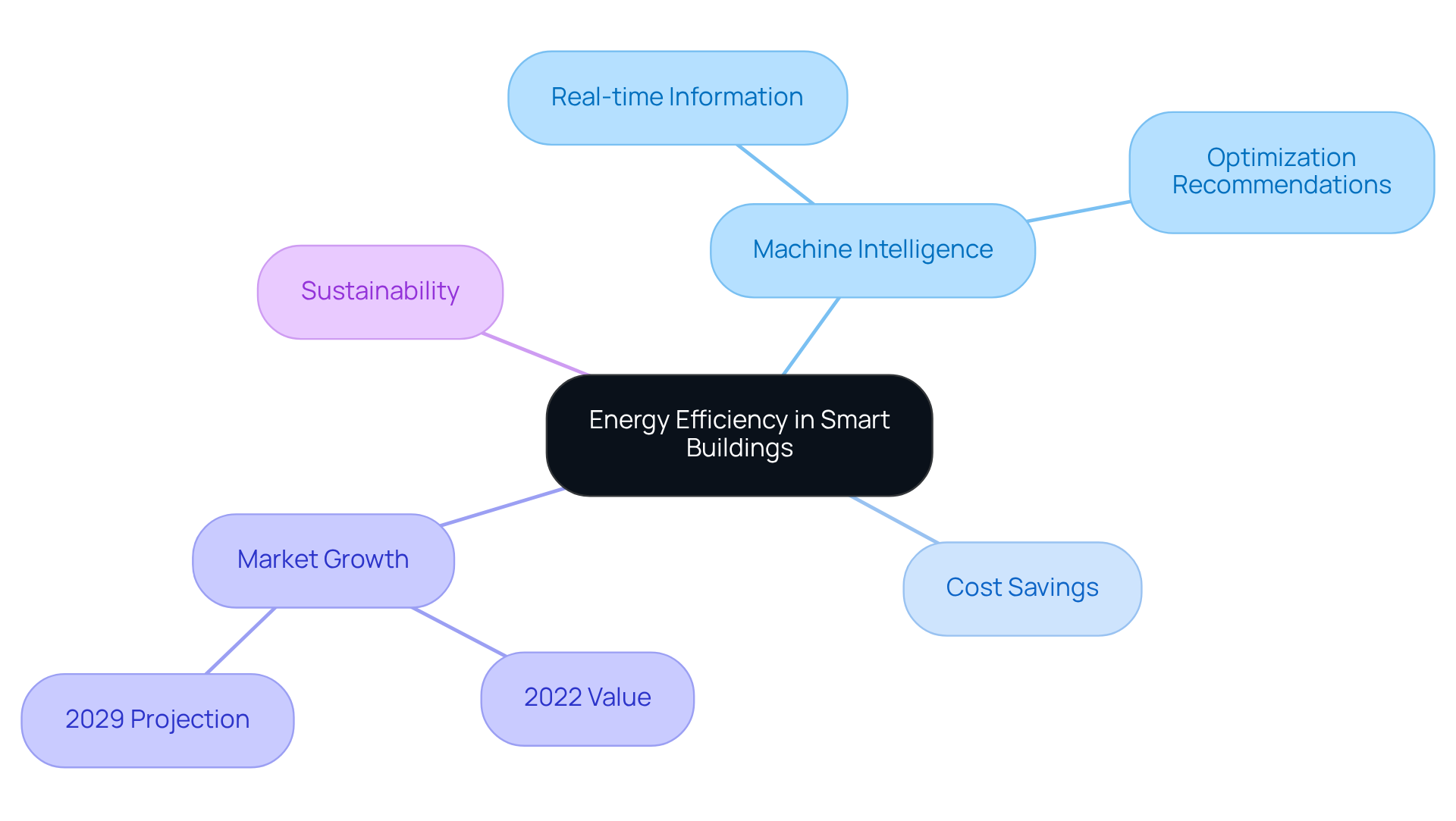
Lease Management Automation: Streamline Processes with Machine Learning
Machine learning applications in property management are revolutionizing lease management by automating critical tasks such as:
- Tracking lease expirations
- Managing renewals
- Ensuring compliance
Through , real estate managers can anticipate lease-related activities, enabling timely actions that align with legal requirements. This automation significantly alleviates administrative burdens, allowing teams to focus on strategic initiatives while enhancing compliance and minimizing risks associated with lease management.
For instance, AI can reduce manual lease abstraction error rates from approximately 10% to under 1%, showcasing the precision that machine learning brings to the table. Furthermore, predictive analytics assists in recognizing trends and possible compliance concerns, ensuring that managers adopt a proactive rather than reactive approach.
As Sienam Ahuja, CEO of Bryckel AI, states, 'Machine learning applications in property management are transforming every aspect of the industry, from automating routine tasks to managing lease data with precision.'
In addition, the incorporation of stakeholder involvement in the execution of these innovations is essential for addressing obstacles and guaranteeing effective acceptance. As the landscape of lease management evolves, the integration of these technologies is not just beneficial but essential for maintaining operational efficiency and compliance.
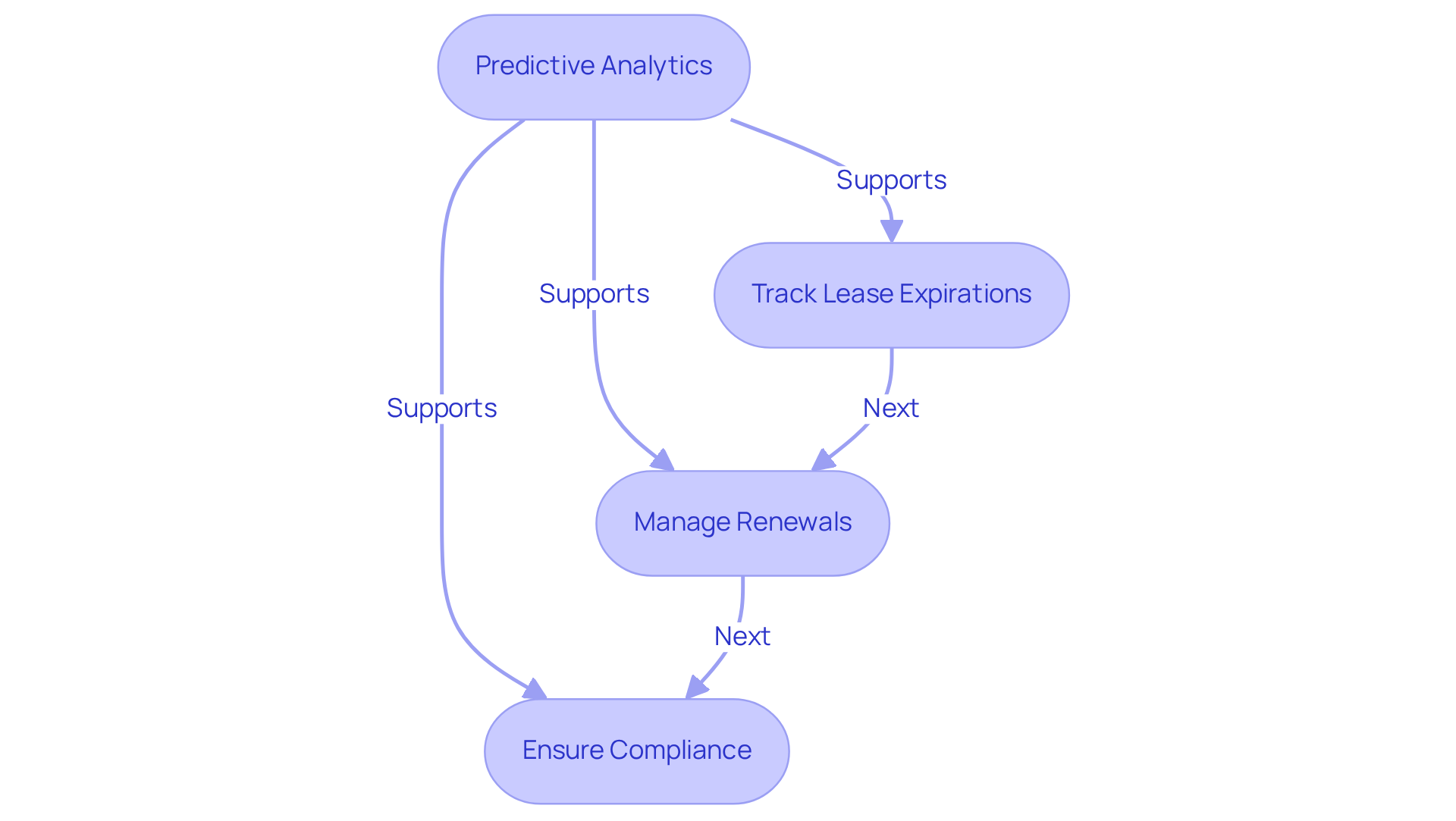
Targeted Advertising: Reach Potential Tenants with Machine Learning
The use of machine learning applications in property management plays a pivotal role in analyzing resident demographics and preferences, thereby facilitating the creation of targeted advertising campaigns. By identifying the characteristics of ideal renters, property managers can utilize machine learning applications in property management to tailor their marketing strategies and effectively engage the right audience through the most efficient channels. This targeted approach not only enhances the likelihood of attracting suitable tenants but also , ensuring that resources are utilized effectively.
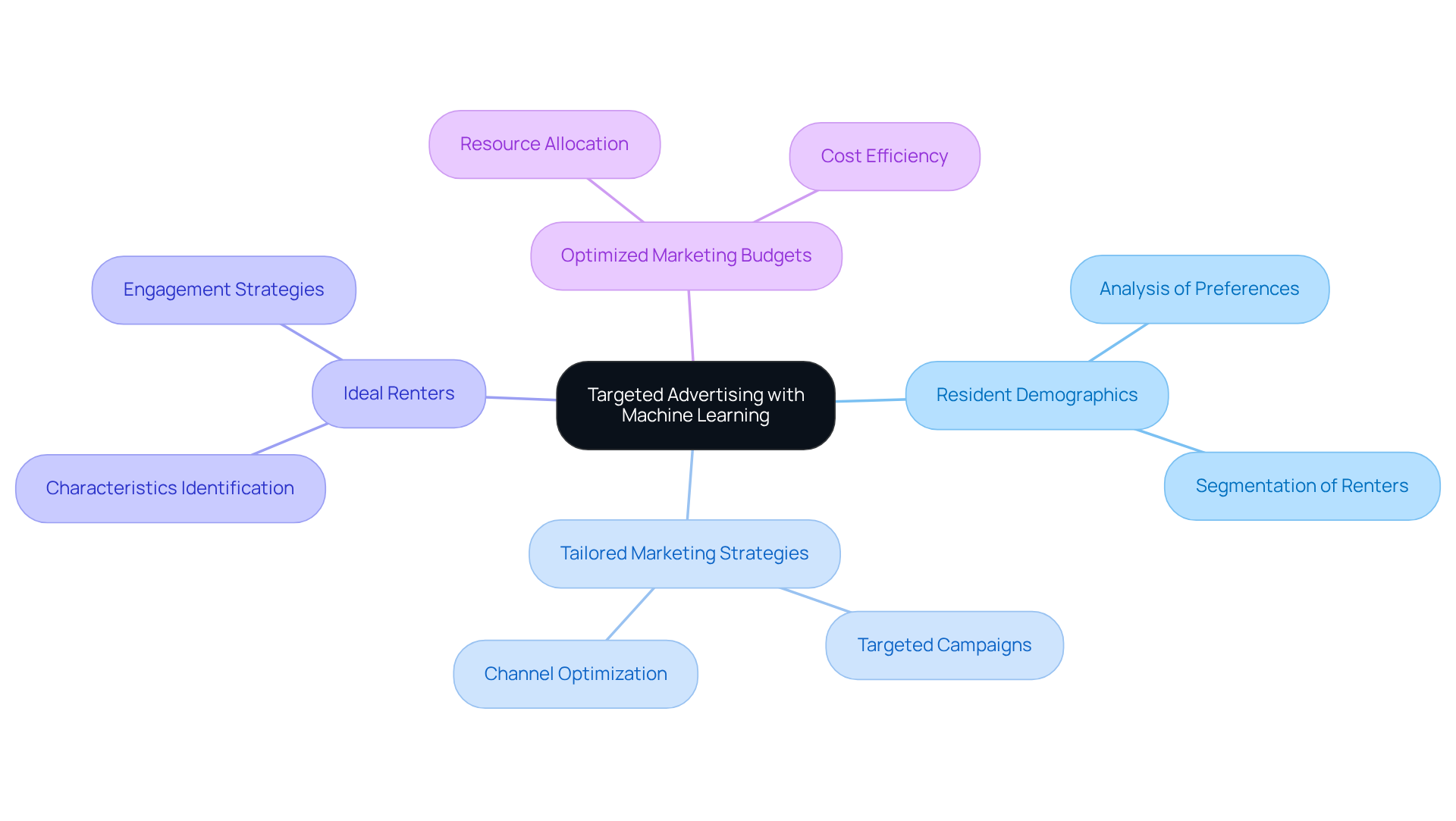
Fraud Detection: Safeguard Property Management with Machine Learning
The use of in property management significantly enhances fraud detection by meticulously analyzing transaction patterns and identifying anomalies. By employing advanced algorithms, real estate managers can identify suspicious activities in real time, facilitating prompt investigation and intervention. This proactive approach not only protects assets but also fosters trust among residents and stakeholders.
For instance, multi-layered identity-based fraud solutions, such as TransUnion's TruValidate™ ResidentID, effectively identify warning signs in applicants before they gain access to residences, streamlining the approval process for legitimate tenants.
Furthermore, with 27% of businesses capable of detecting fraud in real time and 61% of respondents indicating that false positives incur higher costs than actual fraud losses, the integration of machine learning applications in property management has become essential for effective fraud prevention.
As the landscape of real estate evolves, asset managers must respond swiftly and effectively to emerging threats, particularly noting that 43% of these managers have reported an increase in evictions due to fraud.
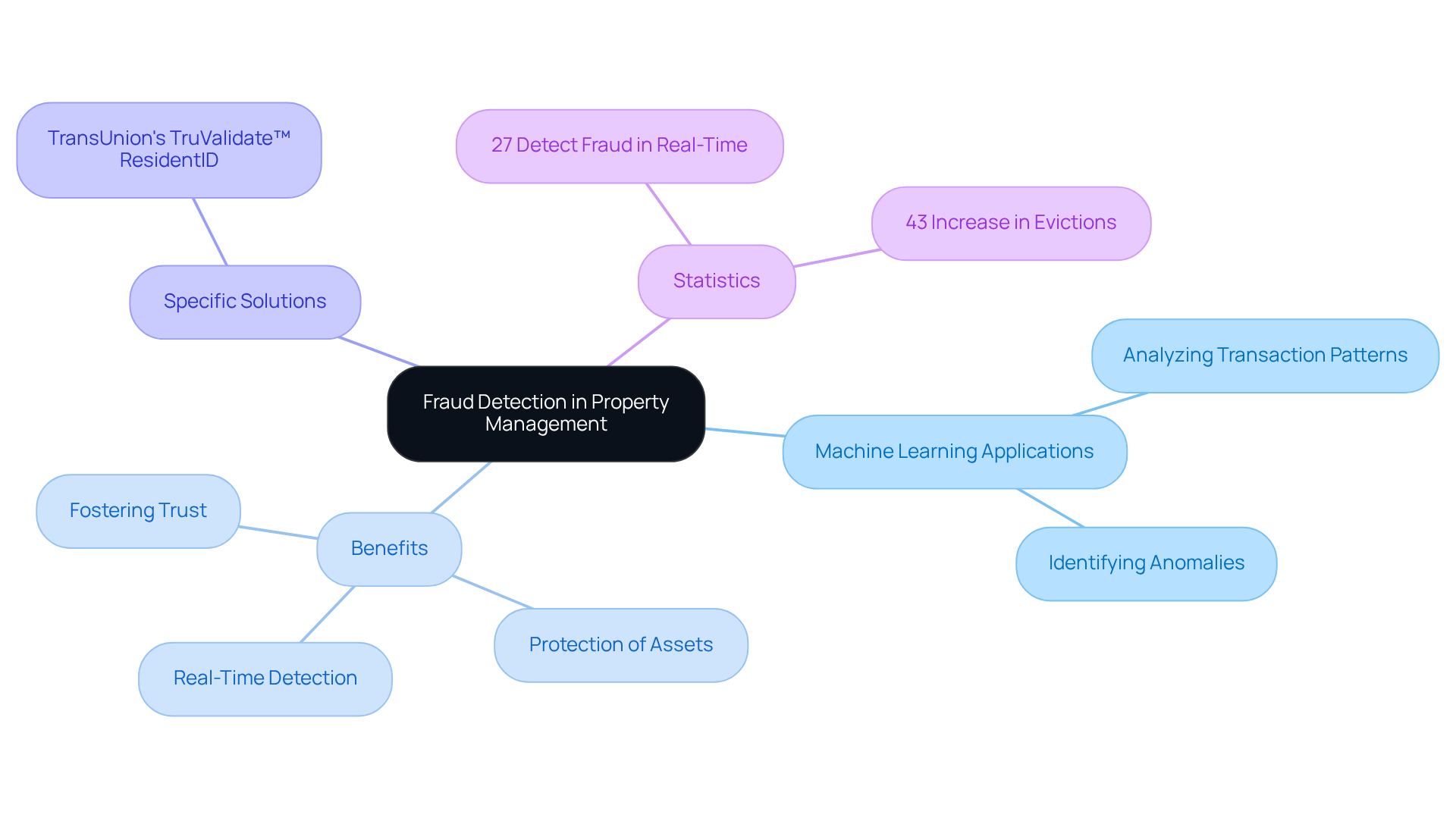
Chatbots: Enhance Customer Service in Property Management with Machine Learning
Machine learning-powered chatbots are revolutionizing customer service within real estate management by offering 24/7 assistance for resident inquiries and concerns. By leveraging advanced natural language processing, these chatbots accurately interpret and respond to resident questions, significantly enhancing communication. This prompt support not only increases resident satisfaction but also allows managers to concentrate on more complex issues that require human intervention.
With the capability to handle up to 79% of standard inquiries, chatbots streamline operations, leading to and reduced response times. Furthermore, businesses can save up to 30% in customer support costs through the implementation of chatbots, positioning them as a financially advantageous solution.
As the global chatbot market is projected to exceed a valuation of $15 billion by 2025, the adoption of machine learning applications in property management is becoming essential for maintaining a competitive edge and fostering positive tenant relationships. Moreover, chatbots facilitate the scheduling of visits to properties, further enhancing the tenant experience.
As Stephen Hawking remarked, advancements in AI signify a monumental development in human history, highlighting the critical role of these technologies in transforming property management.
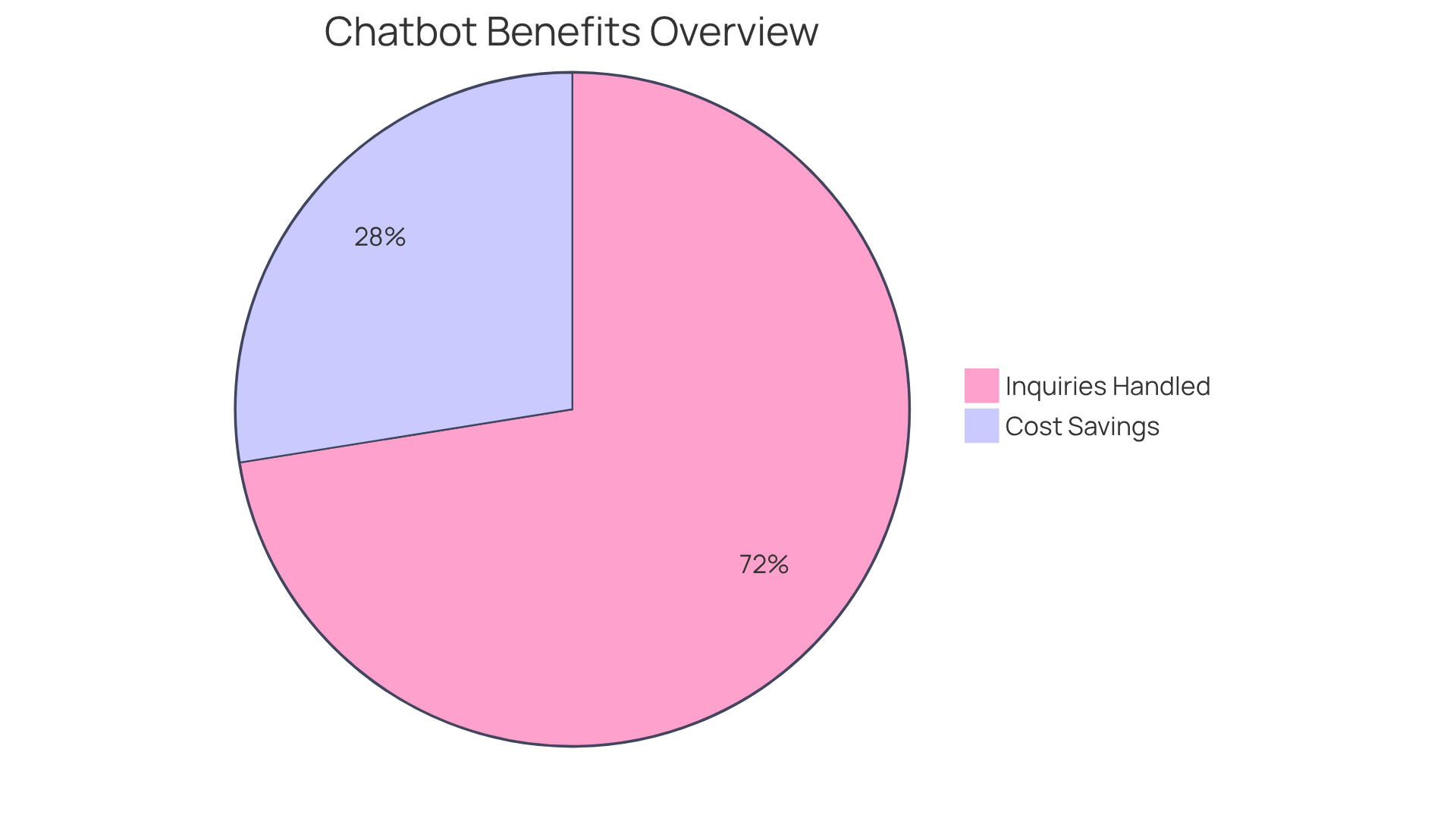
Conclusion
The integration of machine learning applications in property management is fundamentally transforming the industry by optimizing processes, enhancing efficiency, and improving tenant experiences. By harnessing advanced technologies, property managers can streamline various tasks—from automated title research to predictive maintenance—ultimately leading to significant cost savings and more informed decision-making.
Key applications of machine learning have been highlighted throughout the article, including:
- Automated document processing for landmen
- AI leasing assistants that enhance tenant interactions
- Energy efficiency solutions that reduce operational costs
Each application not only simplifies workflows but also provides valuable insights that drive strategic initiatives in property management.
As the real estate sector continues to evolve, embracing these innovative technologies is essential for maintaining a competitive edge. The benefits of machine learning in property management are unmistakable: enhanced accuracy, improved tenant satisfaction, and reduced operational costs. Stakeholders are urged to explore these advancements and implement them to cultivate a more efficient, responsive, and sustainable property management environment.
Frequently Asked Questions
What is Parse AI and how does it assist in title research?
Parse AI utilizes advanced machine learning algorithms to automate the extraction of essential information from title documents, enhancing the accuracy and efficiency of title research by analyzing extensive datasets for patterns and inconsistencies.
How does Parse AI improve the workflow of title researchers?
By automating the title research process, Parse AI allows title researchers to expedite their workflows with greater precision, significantly reducing the potential for human error and enabling them to focus on strategic decision-making instead of tedious paperwork.
What impact is AI projected to have on the global economy by 2030?
The global AI market is expected to grow significantly by 2027, with AI anticipated to boost global GDP by 14% by 2030.
How does machine learning enhance document processing for landmen?
Machine learning applications, particularly through optical character recognition (OCR), enable landmen to swiftly analyze and categorize extensive paperwork, transforming scanned documents into editable formats and improving data extraction efficiency.
What are the benefits of using OCR in property management?
OCR enhances the speed and accuracy of document processing, minimizes the risk of errors in property transactions, and allows landmen to concentrate on strategic decision-making rather than administrative tasks.
How much can intelligent document processing (IDP) reduce document verification time?
Intelligent document processing can reduce document verification time by as much as 85%, with 55% of companies reporting faster decision-making as a direct benefit of automated document workflows.
What role does predictive maintenance play in property management?
Predictive maintenance uses machine learning algorithms to analyze historical maintenance data to forecast potential equipment or system failures, allowing managers to proactively schedule maintenance and reduce downtime and repair expenses.
What cost savings can organizations expect from implementing predictive maintenance?
Organizations can expect to lower maintenance costs by up to 25% by addressing minor issues before they escalate, with significant cost savings typically observed within 6-12 months of full implementation.
What is the primary objective of facilities focusing on predictive maintenance?
Almost 47% of facilities prioritize enhancing operational uptime through predictive maintenance, ensuring that facilities remain functional and efficient.
What challenges must organizations overcome for successful implementation of predictive maintenance?
Successful implementation requires access to reliable, accurate data, addressing potential skill gaps within teams, and being prepared for the initial investment in technology.




